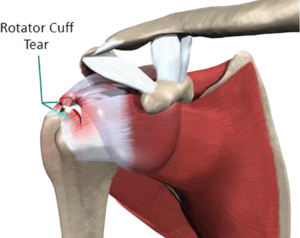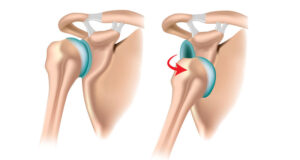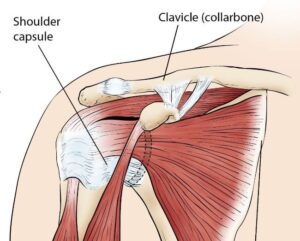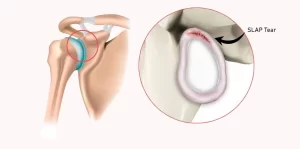Are You Having Shoulder Pain? You need to know Some Common Shoulder Injuries

Does your shoulder hurt every time you raise your arm? Or are you struggling with everyday tasks because of shoulder pain? Understanding common shoulder injuries could be the first step towards finding relief and reclaiming your mobility. Let’s dive into the world of shoulder injuries to shed light on what might be causing you discomfort and how you can you take action to heal.
Shoulder pain, stiffness, or weakness can hinder daily activities such as grabbing items on high shelves, driving, or even brushing your hair.
Identifying the cause of your shoulder discomfort is crucial in order to find relief. However, the list of possible reasons is quite extensive.
Indicators of a Shoulder Injury
If you’re feeling pain in your shoulder, consider these questions:
Is my shoulder stiff? Can I move my arm through all its usual positions? Does my shoulder feel unstable, like it might pop out or slip out of its socket? Do I lack the strength in my shoulder to perform everyday tasks?
If you answered “yes” to any of these questions, it’s advisable to consult an orthopedic surgeon to assess the severity of the issue.
Orthopedic surgeons categorize shoulder problems into these types:
- Instability The shoulder joint works like a ball-and-socket. It can become unstable if the ball tends to slip out of the socket due to being loose or from an injury. This is called instability and can lead to dislocation. People with this condition may feel pain when moving their arm or might avoid movements that make the shoulder feel like it could slip out.
- Impingement It happens when the shoulder muscles rub too much against parts of the shoulder blade, like the acromion and coracoid. This issue can occur during activities that involve a lot of overhead arm movements. If you experience inflammation in the shoulder, seek medical attention immediately as it can lead to more severe injuries. Repeated rubbing can cause tendinitis (inflammation) and might eventually require surgery.
Some of the most common causes of shoulder inflammation include:
- Osteoarthritis
- Rheumatoid Arthritis
- Tendonitis
- Bursitis
- Stiffness After an injury, the shoulder can become stiff, leading to a condition called adhesive capsulitis or frozen shoulder. If there are no tears in the shoulder structures, it is important not to keep the shoulder immobilized in a sling for too long. Starting physical therapy early can help prevent a frozen shoulder, which can be very painful and slow to heal.
Common Causes of Shoulder Pain
What could be causing your shoulder pain? Here are some possible reasons for the sudden discomfort.
Common Shoulder Injuries
Most shoulder injuries affect the muscles, ligaments, and tendons rather than the bones. However, fractures of the humerus (arm bone) or glenoid (shoulder socket) can occur, involving the bones of the shoulder.
Athletes are particularly prone to shoulder problems. These kinds of common shoulder injuries can develop gradually due to repetitive and intense training that stresses the soft tissues (ligaments, tendons, and muscles) of the shoulder.
-
Rotator Cuff
 Rotator cuff bursitis occurs when the small fluid-filled sacs (bursae) in your shoulder become irritated, causing swelling and inflammation. This often happens alongside tendonitis, presenting similar symptoms and treatment methods.
Rotator cuff bursitis occurs when the small fluid-filled sacs (bursae) in your shoulder become irritated, causing swelling and inflammation. This often happens alongside tendonitis, presenting similar symptoms and treatment methods.
Supraspinatus, Infraspinatus, and Subscapularis Tears
These muscles are part of the rotator cuff, stabilizing the shoulder and allowing movement. Tears in these muscles can cause pain, weakness, and limited motion:
- Supraspinatus: Lifts the arm. A tear causes pain when lifting above shoulder height.
- Infraspinatus: Rotates the shoulder outward. A tear results in pain during outward arm movements.
- Subscapularis: Rotates the shoulder inward. A tear causes pain when rotating the arm inward or reaching behind the back.
2. Shoulder Impingement Syndrome
If you have a rotator cuff problem, you might develop shoulder impingement syndrome. Swelling from a rotator cuff injury can cause your muscles and tendons (Supraspinatus impingement) to rub or get “pinched” in the tight space, leading to significant discomfort.
Symptoms usually improve over weeks to months with physical therapy, rest, ice, and medicines. Read more about Shoulder Impingement Syndrome.
3. Frozen Shoulder
This severe shoulder stiffness can occur at any age. Frozen shoulders can affect people with diabetes, thyroid disease, heart disease, or Parkinson’s disease. It can also develop if the shoulder has been immobile for a while or if a minor shoulder injury heals with scar tissue that limits joint movement. Read more about Frozen Shoulder
4. Calcific Tendonitis
Calcific tendonitis happens when calcium builds up in your tendons, forming deposits. These deposits can gather in one spot or in multiple areas. If they grow larger or get irritated, they can cause intense pain. This condition commonly affects the shoulder, known as the rotator cuff, but it can also occur in other parts of the body.
Following are the symptoms of Calcific Tendonitis:
- Sudden shoulder pain or stiffness.
- Sharp pain when moving your shoulder.
- Severe pain that makes it hard to sleep. “
- Limited ability to move your shoulder.
- Tenderness in the rotator cuff.
Calcific Tendonitis can be diagnosed from X-Ray, MRI & Ultrasound. Calcific tendonitis can develop from long-term rotator cuff tendonitis. The calcium deposits are often visible on X-rays. Treatment usually includes physical therapy and medication as advised by the doctor.
5. Shoulder Osteoarthritis
Shoulder osteoarthritis is a condition where the cartilage in the shoulder joint wears down over time, leading to pain, stiffness, and reduced range of motion. When Osteoarthritis progresses, shoulder stiffness can become so severe that you may lose the ability to reach behind your back.
There are various causes of shoulder osteoarthritis. They are:
- Osteoarthritis, Rheumatoid Arthritis, Rotator Cuff Arthropathy, Trauma to your shoulder, Avascular Necrosis.
- a past injury or fracture in your shoulder
- a family history of osteoarthritis
- obesity
- inflammation, which can stem from underlying medical conditions or an unknown cause
- excessive joint wear and tear from heavy construction work or playing overhead sports like tennis
Osteoarthritis symptoms gradually appear over time. In some cases, a shoulder injury from sports or other activities can trigger a degenerative process that eventually leads to osteoarthritis.
Doctor will also ask the questions:
- assessing your shoulder’s range of motion
- talking about what causes your pain and any at-home treatments that provide relief
Shoulder osteoarthritis can be diagnosed by imaging tests such as X-rays or MRI scans.
Treatment focuses on pain management, physical therapy, and sometimes surgery like Shoulder Replacement Surgery.
6. SLAP Tear
SLAP tears occur when the cartilage inside your shoulder joint gets torn. These tears can result from injury or overuse, making it painful or difficult to move your shoulder and arm. If not treated, SLAP tears can cause ongoing pain, restrict your arm and shoulder movement, and lead to more serious shoulder issues.
At any given time, 25% of adults experience shoulder pain from injury or overuse. SLAP tears, also called labrum tears, account for 4% to 8% of all shoulder injuries. Read More About SLAP Tear
7. Shoulder Dislocation

Shoulder injuries are common, affecting 25% of adults due to injury or overuse. SLAP tears, accounting for 4% to 8% of shoulder injuries, affect the labrum—a cartilage rim in the shoulder socket. A shoulder dislocation occurs when the ball of the shoulder joint separates from the socket, potentially damaging muscles, nerves, tendons, ligaments, and blood vessels.
Recurrent shoulder dislocation involves repeated instances of the shoulder joint dislocating, leading to chronic instability and pain. Associated injuries include the Hill-Sachs lesion—a divot in the upper arm bone from dislocation—and the Bankart lesion—a tear in the shoulder socket’s cartilage from anterior dislocation.
Understanding these injuries is crucial for effective diagnosis and management, emphasizing early intervention and rehabilitation to prevent long-term complications and restore shoulder function. Read More About Shoulder Dislocation.
A message from Dr. Preetesh Choudhary:
Shoulder pain and stiffness can be frustrating and distressing. If you’ve been dealing with these issues for a long time and other treatments haven’t worked, talk to us to find the best treatment for you. We’ll discuss what to expect and when surgery might be an option. We’re here to guide you and help you recover quickly and safely.








